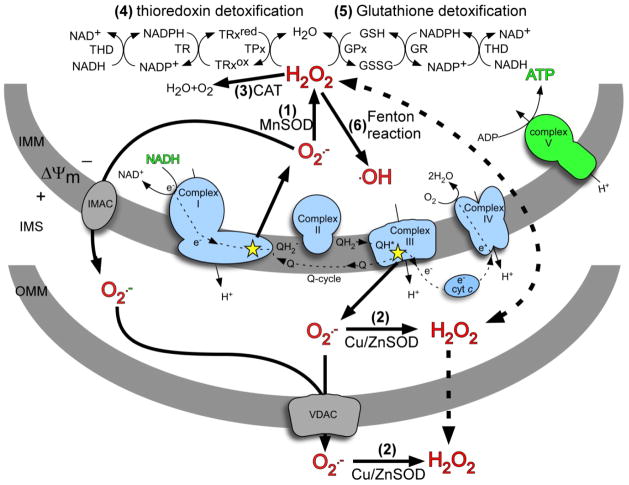Figure 2.
Mitochondrial ROS production and defense. Superoxide (O2·−) generated by the respiratory chain is mostly released to the matrix at complex I and the IMS at complex III (indicated by stars). O2·− can naturally dismute to hydrogen peroxide (H2O2) or is enzymatically dismuted by matrix MnSOD (1) or Cu/ZnSOD (2) in the IMS or cytosol. H2O2 is detoxified in the matrix by catalase (3), the thioredoxin/thioredoxin peroxidase system (4), or the glutathione/glutathione peroxidase system (5). Alternately, H2O2 can react with metal ions to generate the highly reactive hydroxyl radical (·OH) via Fenton chemistry (6). O2·− is not membrane permeable but can pass through ion channels (solid lines), whereas H2O2 can pass freely through membranes (dashed lines). IMM, inner mitochondrial membrane; IMS, intermembrane space; OMM, outer mitochondrial membrane; O2·−, superoxide; H2O2, hydrogen peroxide; MnSOD, manganese superoxide dismutase; Cu/ZnSOD, copper/zinc superoxide dismutase; CAT, catalase; THD, NADH transhydrogenase; TR, thioredoxin reductase; TPx, thioredoxin peroxidase; TRxred, reduced thioredoxin; TRxox, oxidized thioredoxin; GSH, glutathione; GSSG, glutathione disulfide; IMAC, inner membrane ion channel; VDAC, voltage dependant anion channel; ΔΨm, membrane potential.

